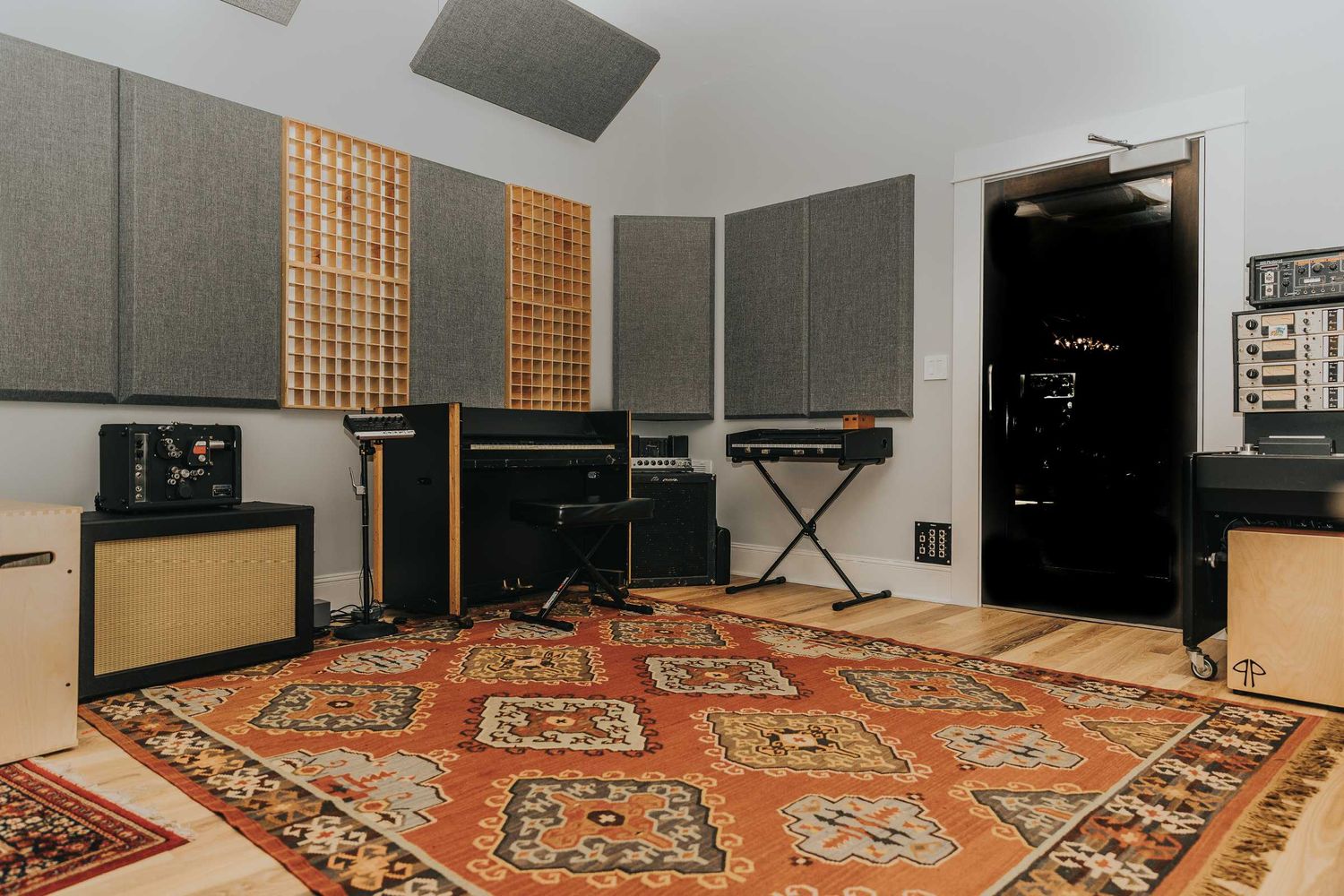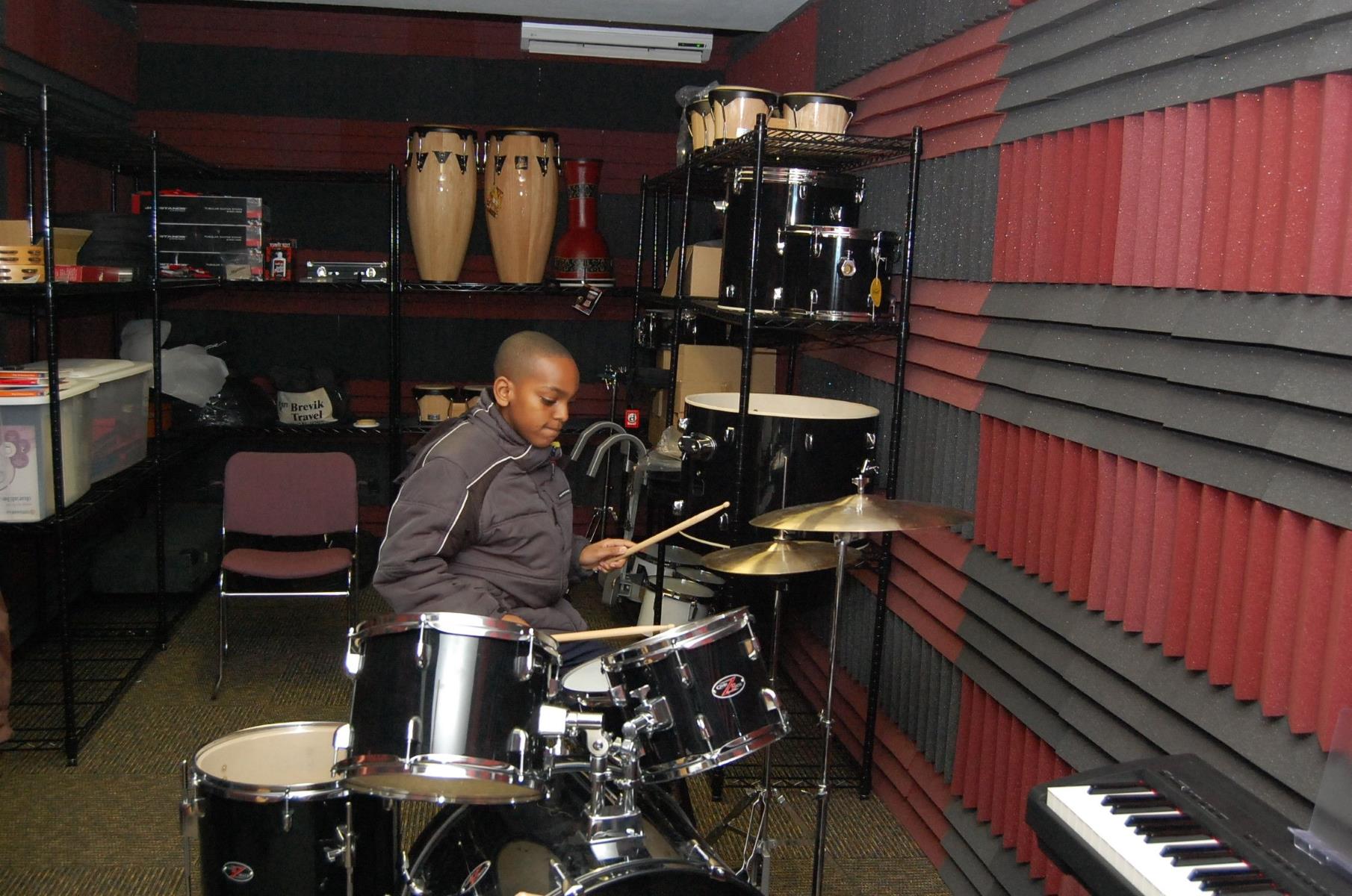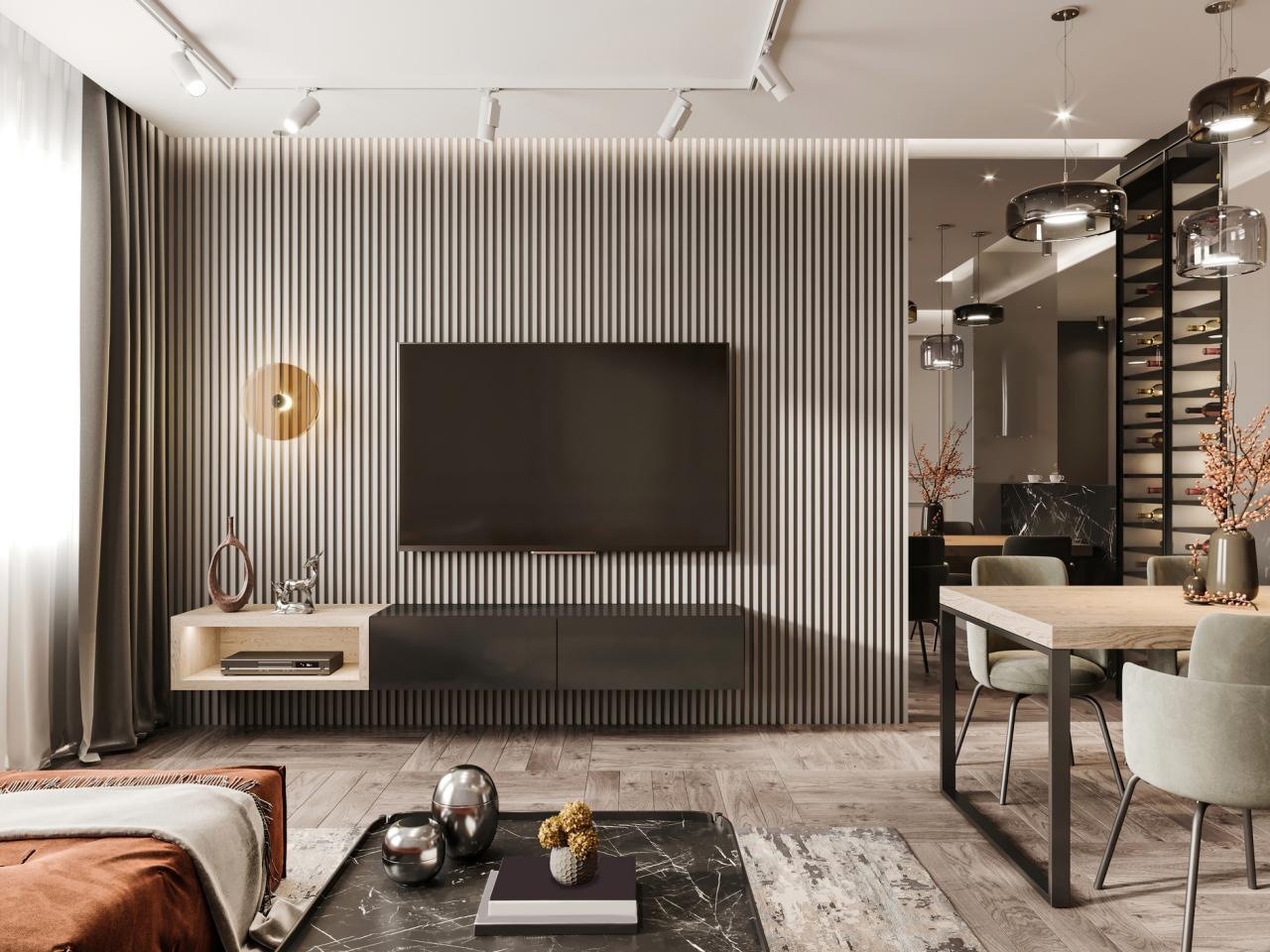Home>Production & Technology>Acoustic>How To Make A Room Acoustic


Acoustic
How To Make A Room Acoustic
Published: March 12, 2024
Learn how to improve room acoustics with our expert tips and techniques. Create a balanced and pleasant sound environment for your space.
(Many of the links in this article redirect to a specific reviewed product. Your purchase of these products through affiliate links helps to generate commission for AudioLover.com, at no extra cost. Learn more)
Table of Contents
Introduction
Creating an optimal acoustic environment is crucial for anyone who appreciates high-quality sound. Whether you are a music enthusiast, a home theater aficionado, or a professional audio engineer, the acoustic properties of a room significantly impact the way sound is perceived. Understanding how to manipulate these properties to achieve the desired sound is a skill that can greatly enhance the listening experience.
The concept of room acoustics encompasses the study and manipulation of sound within an enclosed space. It involves understanding how sound waves interact with the surfaces and dimensions of a room, and how these interactions affect the overall sound quality. Achieving ideal room acoustics involves a combination of science, art, and practical application.
In this comprehensive guide, we will delve into the intricacies of room acoustics, exploring the fundamental principles and practical techniques for optimizing sound within a given space. From understanding the behavior of sound waves to implementing strategic acoustic treatments, this guide will equip you with the knowledge and tools to transform any room into an acoustically pleasing environment.
Whether you are setting up a home recording studio, designing a dedicated listening room, or simply seeking to improve the sound quality in your living space, mastering the fundamentals of room acoustics is essential. By the end of this guide, you will have a solid understanding of how to assess, analyze, and enhance the acoustics of any room, ultimately elevating the way you experience sound. Let's embark on this journey to unlock the secrets of creating exceptional room acoustics.
Understanding Room Acoustics
Understanding the fundamental principles of room acoustics is essential for anyone aiming to create an optimal listening environment. Room acoustics refers to the study of how sound behaves within an enclosed space, encompassing the interactions between sound waves and the surfaces, dimensions, and contents of the room. The goal of optimizing room acoustics is to achieve a balanced, natural, and immersive sound experience that accurately reproduces the intended audio content.
The behavior of sound within a room is influenced by various factors, including the size, shape, and construction materials of the space. When sound is produced within a room, it interacts with the surfaces such as walls, ceilings, and floors, leading to reflections, absorptions, and diffusions. These interactions can either enhance or degrade the overall sound quality, depending on how they are managed.
One of the key concepts in room acoustics is the understanding of sound reflections. When sound waves encounter a surface, they bounce off it and travel in different directions. These reflections can create a sense of spaciousness and envelopment in the sound, but excessive reflections can lead to echo, flutter echo, and other undesirable effects. Managing these reflections through strategic placement of acoustic materials and furnishings is crucial for achieving a balanced acoustic environment.
Moreover, the absorption and diffusion of sound within a room play a significant role in shaping the overall sonic characteristics. Absorption materials, such as acoustic panels and bass traps, are utilized to reduce the level of sound reflections and control the reverberation time, thus improving clarity and intelligibility. On the other hand, diffusion materials scatter sound waves, creating a sense of spaciousness and preventing the buildup of standing waves and other acoustic anomalies.
In addition to the physical attributes of the room, the positioning of the listener and the sound source also greatly influences the perceived sound quality. The interaction between the direct sound from the speakers and the reflected sound from the room surfaces can significantly impact the tonal balance, stereo imaging, and overall listening experience.
By comprehensively understanding the intricate interplay between sound waves and the room environment, one can effectively manipulate these interactions to create an acoustically pleasing space. This understanding forms the foundation for implementing strategic acoustic treatments and optimizing the room for a wide range of audio applications, from critical listening and music production to home theater enjoyment.
Assessing the Room
Assessing the acoustic properties of a room is a crucial first step in the journey toward creating an optimal listening environment. By thoroughly evaluating the characteristics of the space, one can identify potential acoustic challenges and develop a tailored approach to address them effectively. The assessment process involves analyzing various aspects of the room, including its size, shape, construction materials, and existing acoustic properties.
Room Dimensions and Shape
The dimensions and shape of a room have a profound impact on its acoustic behavior. Certain room dimensions can lead to the buildup of standing waves and resonances at specific frequencies, resulting in uneven bass response and sonic coloration. To assess the room, measurements of its length, width, and height are taken to identify any potential resonant frequencies that may need to be addressed through acoustic treatments or speaker placement.
Construction Materials
The construction materials used in the room, such as drywall, concrete, wood, and glass, influence the way sound waves interact within the space. Hard, reflective surfaces tend to cause excessive sound reflections, leading to potential issues with echo and reverberation. Conversely, porous and absorptive materials can help mitigate these reflections, contributing to a more controlled acoustic environment. By assessing the types of materials present in the room, one can determine the extent of acoustic treatment required to achieve the desired sound quality.
Existing Acoustic Anomalies
During the assessment, it is essential to listen for any existing acoustic anomalies, such as flutter echo, resonant peaks, or excessive reverberation. These anomalies can be identified through careful listening tests and acoustic measurements using specialized equipment. By pinpointing these issues, one can develop a targeted plan to address them, whether through the strategic placement of acoustic panels, bass traps, or diffusers, or through adjustments to the room's layout and furnishings.
Listening Positions
The position of the listener within the room plays a critical role in the perception of sound. Assessing the optimal listening positions involves experimenting with different locations to identify the sweet spot where the sound is most balanced and immersive. This process may involve considering the distance from the speakers, the angle of listening, and the potential obstructions or reflections that may affect the sound quality.
By conducting a comprehensive assessment of the room, taking into account its dimensions, construction materials, existing acoustic anomalies, and optimal listening positions, one can gain valuable insights into the specific acoustic challenges and opportunities present. This knowledge forms the basis for developing a tailored acoustic treatment plan that addresses the unique characteristics of the room, ultimately leading to a refined and immersive listening experience.
Absorption and Diffusion
Absorption and diffusion are fundamental concepts in room acoustics, playing a pivotal role in shaping the sonic characteristics of a space. These acoustic treatments are employed to manage the behavior of sound waves within a room, ultimately enhancing the clarity, balance, and spaciousness of the audio experience.
Absorption
Absorption materials are designed to reduce the level of sound reflections within a room, effectively controlling the reverberation time and minimizing sonic coloration. These materials are typically porous and are strategically placed on walls, ceilings, and other surfaces to attenuate the energy of sound waves. Common absorption materials include acoustic panels, bass traps, and specialized fabric coverings.
Acoustic panels are versatile sound-absorbing treatments that come in various shapes, sizes, and thicknesses. They are effective in attenuating mid and high-frequency reflections, improving the overall clarity and intelligibility of sound. Bass traps, on the other hand, target low-frequency resonances, preventing the buildup of boomy or muddy bass in the room. By strategically positioning absorption materials based on the specific acoustic characteristics of the room, one can effectively tailor the reverberation time and frequency response to achieve a more balanced and controlled sound environment.
Diffusion
Diffusion materials are utilized to scatter sound waves, reducing the buildup of strong reflections and creating a sense of spaciousness within the room. Unlike absorption, which reduces the energy of sound waves, diffusion preserves the energy while altering the direction of sound propagation. This results in a more balanced distribution of sound throughout the room, minimizing the perception of strong early reflections and enhancing the envelopment of the sound field.
Diffusers come in various designs, including skyline diffusers, quadratic diffusers, and binary amplitude diffusers, each offering unique scattering properties across different frequency ranges. By strategically placing diffusers on specific surfaces within the room, one can effectively manage the reflections and create a more natural and immersive listening experience. Diffusion is particularly beneficial in rooms with limited wall space for absorption treatments, as it allows for the control of reflections without overly deadening the room.
By understanding the principles of absorption and diffusion and strategically implementing these acoustic treatments, one can effectively manage the reflections, reverberation, and spatial characteristics of a room, ultimately transforming it into an acoustically pleasing environment. The careful balance of absorption and diffusion ensures that the room exhibits a controlled reverberation time, balanced frequency response, and a spacious, enveloping sound field, enhancing the overall listening experience for music, movies, and other audio content.
Speaker and Listener Placement
Strategic speaker and listener placement is a critical aspect of optimizing room acoustics and achieving an immersive, balanced sound experience. The positioning of speakers and the listener within the room significantly influences the perceived sound quality, stereo imaging, and overall listening immersion. By carefully considering the placement of these elements, one can effectively manage the interactions between direct and reflected sound, ultimately enhancing the sonic characteristics of the space.
Speaker Placement
The placement of speakers within a room plays a pivotal role in determining the accuracy of sound reproduction and the spatial distribution of audio. When positioning speakers, several factors must be taken into account, including the room dimensions, the characteristics of the speakers, and the desired listening experience.
The distance between the speakers and the walls, as well as the angle of placement, greatly influences the interaction between the direct sound from the speakers and the reflections from the room surfaces. Placing speakers too close to walls can lead to excessive bass buildup and uneven frequency response, while positioning them too far apart can compromise the stereo imaging and soundstage.
Moreover, the height at which the speakers are placed can impact the perception of sound, particularly in terms of the localization of instruments and vocals. By experimenting with different speaker positions and orientations, one can identify the optimal placement that minimizes the impact of room-induced coloration and maximizes the accuracy and coherence of the sound reproduction.
Listener Placement
Equally important is the positioning of the listener within the room to ensure an optimal listening experience. The sweet spot, often referred to as the ideal listening position, is where the sound is most balanced, immersive, and accurately represented. Factors such as the distance from the speakers, the angle of listening, and potential obstructions or reflections must be considered when determining the listener's placement.
The listener's position should be carefully aligned with the speakers to achieve a balanced stereo image and an immersive soundstage. Additionally, the listener's distance from the speakers influences the perception of sound balance, stereo separation, and overall tonal accuracy. By experimenting with different listener positions, one can identify the sweet spot that offers the most accurate and engaging listening experience.
By meticulously considering the placement of speakers and the listener within the room, one can effectively manage the interactions between direct and reflected sound, ultimately optimizing the room acoustics for a more immersive and accurate sound experience. The strategic placement of these elements forms the foundation for creating a cohesive and enveloping sonic environment, enhancing the way audio content is perceived and enjoyed.
Additional Tips for Improving Room Acoustics
In addition to the fundamental principles of room acoustics, there are several additional tips and techniques that can further enhance the sonic characteristics of a space, creating an immersive and balanced listening environment. These tips encompass a range of practical considerations, from room layout and furnishings to advanced acoustic treatments, all aimed at optimizing the acoustics of the room for a superior audio experience.
-
Room Layout and Furnishings: The layout of furniture and furnishings within the room can significantly impact its acoustic properties. By strategically arranging furniture, bookshelves, and other items, one can help diffuse sound reflections and minimize the buildup of standing waves. Additionally, the use of area rugs, curtains, and wall tapestries can contribute to reducing excessive reflections and enhancing the overall sound balance.
-
Room Correction Systems: Utilizing digital room correction systems, such as parametric equalizers and digital signal processors, can help address specific frequency response issues and room-induced coloration. These systems analyze the acoustic characteristics of the room and apply corrective measures to achieve a more balanced and accurate sound reproduction.
-
Ceiling Clouds and Canopies: Installing ceiling clouds and canopies, suspended acoustic treatments positioned above the listening area, can effectively mitigate ceiling reflections and improve the overall sound diffusion. These treatments are particularly beneficial in rooms with high ceilings, where excessive reflections can impact the clarity and coherence of the sound.
-
Subwoofer Placement and Calibration: Proper placement and calibration of subwoofers are crucial for achieving a seamless integration of low-frequency sound within the room. By experimenting with different subwoofer positions and utilizing calibration tools, one can optimize the bass response and minimize room-induced resonances, resulting in a more balanced and impactful low-end reproduction.
-
Room Geometry Adjustments: In some cases, making strategic adjustments to the room's geometry, such as adding diffusers to specific surfaces or altering the room's dimensions, can help address persistent acoustic challenges. While these adjustments may require professional expertise, they can significantly contribute to achieving a more controlled and balanced acoustic environment.
By incorporating these additional tips and techniques, one can further refine the acoustics of a room, ultimately creating a space that is optimized for a superior audio experience. Each of these considerations plays a valuable role in addressing specific acoustic challenges and enhancing the overall sonic characteristics, contributing to a more immersive and enjoyable listening environment.
Conclusion
In conclusion, the art and science of room acoustics encompass a multifaceted journey toward creating an optimal listening environment. By understanding the fundamental principles of sound behavior within enclosed spaces, individuals can effectively manipulate the interactions between sound waves and room surfaces to achieve a balanced, natural, and immersive sound experience.
The assessment of a room's acoustic properties forms the foundation for developing a tailored approach to address potential acoustic challenges. By analyzing the dimensions, construction materials, existing anomalies, and optimal listening positions, one gains valuable insights into the unique characteristics of the room, paving the way for strategic acoustic treatments.
The strategic implementation of absorption and diffusion materials plays a pivotal role in shaping the sonic characteristics of a space. By carefully balancing the use of acoustic panels, bass traps, and diffusers, one can effectively manage reflections, reverberation, and spatial characteristics, ultimately transforming the room into an acoustically pleasing environment.
Furthermore, the strategic placement of speakers and the listener within the room significantly influences the perceived sound quality, stereo imaging, and overall listening immersion. By meticulously considering the placement of these elements, one can optimize the room acoustics for a more immersive and accurate sound experience, creating a cohesive and enveloping sonic environment.
In addition to the fundamental principles, several additional tips and techniques can further enhance the sonic characteristics of a space, contributing to a more immersive and balanced listening environment. These practical considerations, from room layout and furnishings to advanced acoustic treatments, offer valuable avenues for refining the acoustics of a room and elevating the audio experience.
Ultimately, mastering the art of room acoustics empowers individuals to transform any space into an acoustically optimized environment, whether for critical listening, music production, home theater enjoyment, or everyday audio experiences. By leveraging the knowledge and techniques outlined in this guide, individuals can embark on a journey to unlock the secrets of creating exceptional room acoustics, ultimately enhancing the way they experience and appreciate sound.











